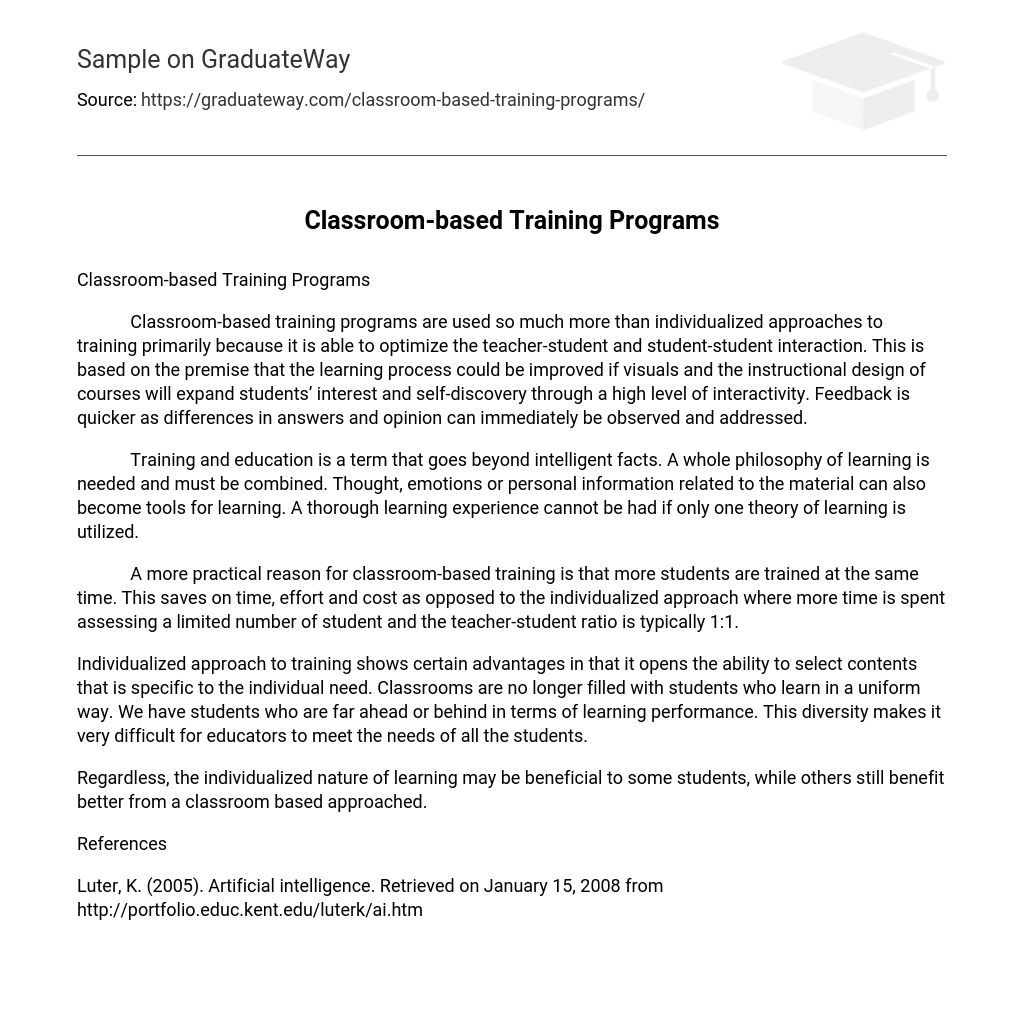Classroom-based training programs are used so much more than individualized approaches to training primarily because it is able to optimize the teacher-student and student-student interaction. This is based on the premise that the learning process could be improved if visuals and the instructional design of courses will expand students’ interest and self-discovery through a high level of interactivity. Feedback is quicker as differences in answers and opinion can immediately be observed and addressed.
Training and education is a term that goes beyond intelligent facts. A whole philosophy of learning is needed and must be combined. Thought, emotions or personal information related to the material can also become tools for learning. A thorough learning experience cannot be had if only one theory of learning is utilized.
A more practical reason for classroom-based training is that more students are trained at the same time. This saves on time, effort and cost as opposed to the individualized approach where more time is spent assessing a limited number of student and the teacher-student ratio is typically 1:1.
Individualized approach to training shows certain advantages in that it opens the ability to select contents that is specific to the individual need. Classrooms are no longer filled with students who learn in a uniform way. We have students who are far ahead or behind in terms of learning performance. This diversity makes it very difficult for educators to meet the needs of all the students.
Regardless, the individualized nature of learning may be beneficial to some students, while others still benefit better from a classroom based approached.
References
Luter, K. (2005). Artificial intelligence. Retrieved on January 15, 2008 from http://portfolio.educ.kent.edu/luterk/ai.htm





